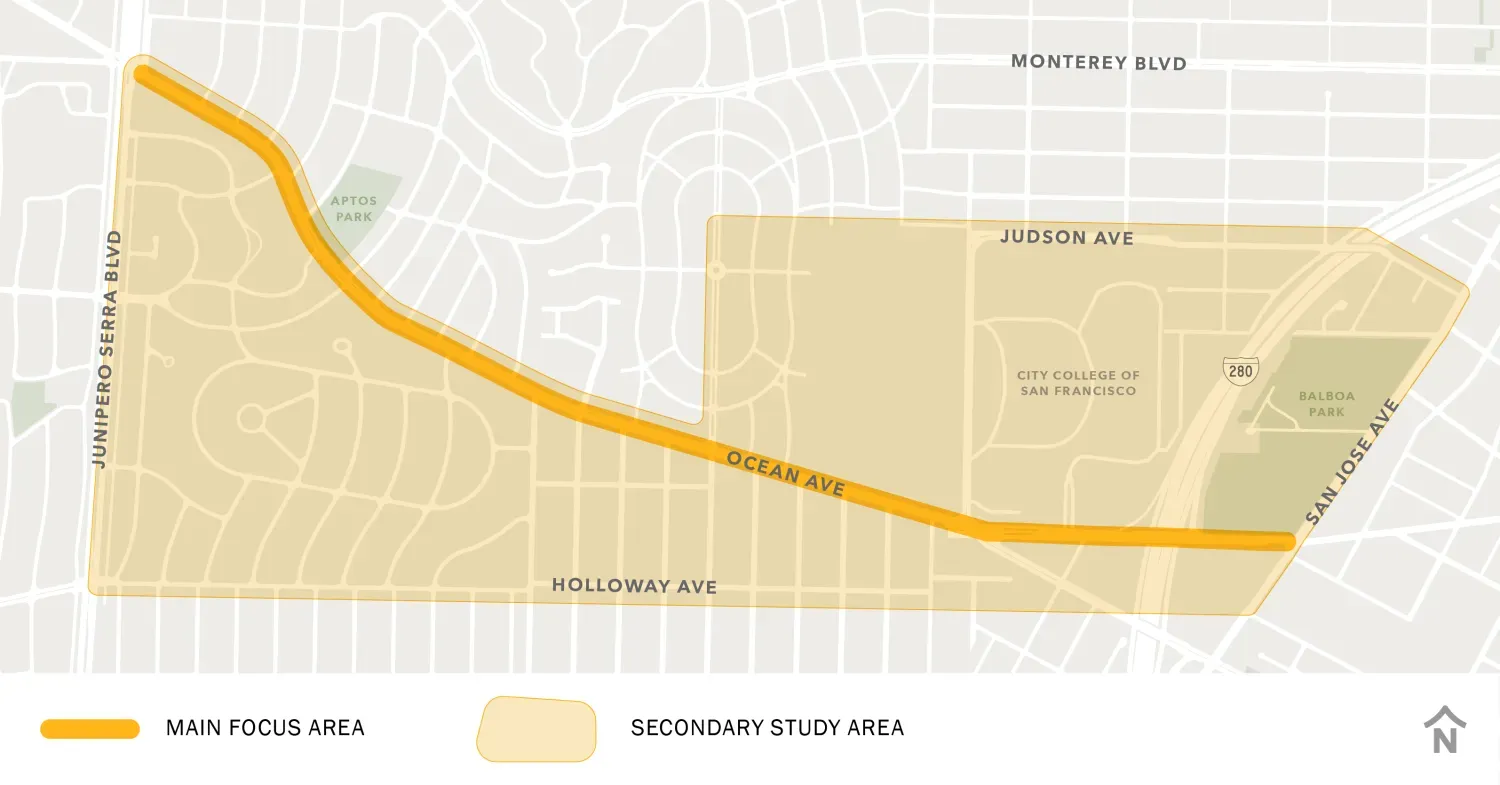An action plan that prioritizes transportation projects along Ingleside’s stretch of the Ocean Avenue in a bid to get them underway was approved last month.
The San Francisco County Transportation Authority’s Board of Directors — which composed of the San Francisco Board of Supervisors — adopted the final Ocean Avenue Mobility Action Plan on June 13.
A 14-member task force made up of residents, community organizations and school representatives from districts 7 and 11 got to work in October 2021 with guidance from transportation authority staff at a cost of $300,000. They reviewed past studies of the Ocean Avenue corridor, held meetings and whittled down projects from dozens of past plans to choose the ones that the city should move forward with in planning, design and eventual implementation.
District 7 Supervisor Myrna Melgar, who serves as the SFCTA board's vice chair, called for the task force to be formed to create the plan.

“Ocean Avenue has also had no less than 27 different plans that have been done by the Planning Department, the [SFCTA], the [San Francisco Municipal Transportation Agency],” Melgar said. “Only a couple of them have moved forward and the rest we were always just kind of stuck in the decision-making process, which is why it was so important to bring the community together and then move forward with the decision making.”
Melgar added that this was not an “easy peasy” process and that the transportation authority hired a professional facilitator to help move the process forward.
“Despite not having come up with a plan for a physically separated bike lane, I think that what we come up with works and connects to the rest of what is going on in the neighborhood — namely the Balboa Reservoir,” Melgar said.
The plan crystalizes ideas from a number of previous plans.
“The most radical thing in the proposal is the removal of the [pedestrian] bridge,” she said. “That had been in the plans before, and the Planning Department already did CEQA analysis of what that would entail.”
The corridor is remarkable for the number of elementary and high schools in its vicinity, Melgar said. She added that it’s also an important connector between City College of San Francisco and San Francisco State University.
“Ocean Avenue is thriving commercially right now,” Melgar said. “We had a lot of vacant storefronts that are being filled.”
The report recommended that the city focus on two large projects and three small projects. One of the large projects is the K Ingleside Rapid Project that will extend streetcar boarding platforms on Ocean Avenue to accommodate two-car trains.
Three smaller projects focused on slowing down traffic, making pedestrian safety improvements and bike improvements are also part of the final project. Ocean Avenue is on the city’s high-injury network, the 12% of San Francisco streets where 68% of severe or fatal traffic crashes occur.
Sara Barz, part of KidsSafeSF and a member of the task force, called in during public comment in support of the final report.
“We need to make more drastic investments in transit to make transit more usable and also in safety to actually hit our Vision Zero goals,” Barz said. “I believe the projects in this plan do help further those efforts.”










